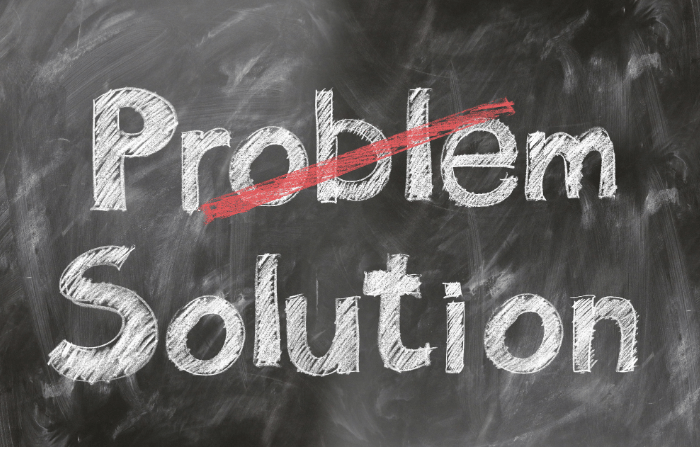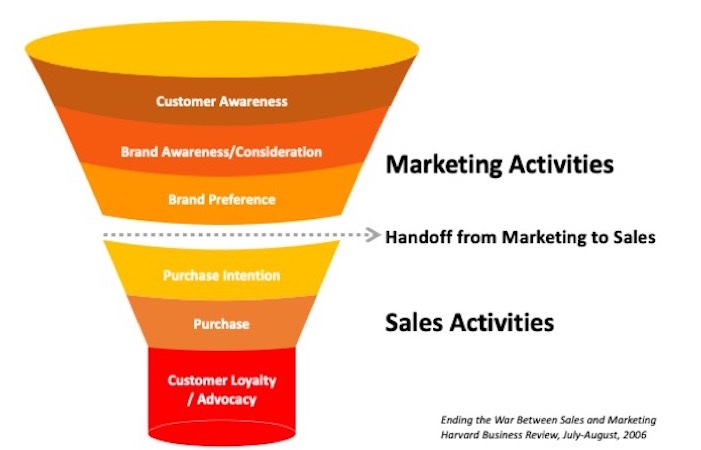Your sales and marketing teams each have their own strengths and value. For your distribution company to compete and succeed in today’s cut-throat marketplace, it would be beneficial that you understand how the sales and marketing teams can use marketing automation to work better together. Having a strong understanding of how to use marketing automation will enable you to
- give your salespeople stronger leads,
- help the sales team stay competitive (and employed), and
- speed up your sales cycle.
Because of advancements in marketing automation over the past few years, today your marketing team can provide more value than ever by passing along actionable information to better prepare a salesperson for a sales call. Marketing technology can track data, spot and predict trends, and provide information that will give your sales team more confidence to make stronger calls because they’re much better prepared to speak to the prospect and address the prospect’s needs.
More importantly, though, your sales team will interact with both prospects and customers on a much deeper and better-connected level than before because they’ll be better educated about the prospect or customer. Given this, there’s a strong chance, therefore, that your prospects and customers will find their interactions with your salespeople to be much more valuable and solutions-focused, hopefully leading them to accept more appointments with your company.
Here are a Few Ways to Take Advantage of the Sales & Marketing “Intelligence”
One of the most popular features of today’s technology is the ability to easily identify and track web visitor behaviors and actions. This information can be integrated into your CRM and will shed some light on how close a customer may be to a buying decision. The information can be used to trigger real-time alerts (so a salesperson will know when to pick up the phone).
For example, let’s say you offer a downloadable guide that lays out details about a product or solution you offer. When someone downloads the guide, it’s a fairly clear indicator that they are interested in learning more about that product or solution. An automated message to your salesperson can be triggered that tells the salesperson who downloaded the guide and whether he actually looked at it, better preparing your salesperson for their next call with this individual. Having this ability is easy and low-cost. This information would also be captured in a customer or prospect’s CRM record for future reference. It will also contribute to their lead score (see below for more information about lead scoring.)
Chances are you already use some variation of marketing automation. And, as we see more development in the artificial intelligence arena, we’ll see new variations and significant advancements with these types of tools.
Are you considering looking further into a more sophisticated marketing automation program for your company? Below are a few questions to ask yourself to help you decide how sophisticated your automation and artificial intelligence should be.
- Would you like to know whether a prospect who visits your site also visits your competitions’ sites?
- How about whether the prospect sat in on a webinar for a competing product or service?
- Would you like to know whether your prospect has a contract in place for services like yours and when it’s going to expire?
- How about information that predicts exactly when the prospect is going to buy and what features he/she is searching for and reading about?
- Would you like to know which country club a prospect belongs to, or where he or she plays golf, or what event they are attending next? (This knowledge is helpful when a face-to-face encounter may advance a deal!)
All of the information above and more is very easily available, yet costly. I would classify these as ‘nice to have’ vs. ‘must have.’
On the flip-side, here are some of the more common, much less expensive uses of marketing automation we’ve seen being used in the distribution industry.
Capture and Close High Quality Leads More Quickly
The primary thrust of marketing automation is to capture leads and then nurture them through the sales funnel before they’re handed off to sales. A good marketing automation program will present compelling and valuable content that interests, attracts and educates more web visitors. Each piece of valuable content brings your visitors closer to the sale. The technology also lets a salesperson see exactly where a prospect is in their journey through your sales funnel.
Identify, Track and Score More Qualified Leads
Having the ability to assign a score to each movement a prospect makes on your website, and then sending up a red flag to your salesforce when those numbers add up to the prospect being “sales-ready”, will help eliminate time and energy wasted on those leads who they’ll know are uninterested because they aren’t interacting with your content.
This activity is called lead scoring, and it’s a common strategy used by sales and marketing teams that helps indicate a prospects’ readiness and qualification for a purchase, resulting in a better ability for the sales team to prioritize their salescalls. Setting up a minimum score threshold ensures that the sales team will only spend time contacting those leads who are actively displaying buying ‘behaviors.’ Once a lead crosses that threshold, (the threshold being determined in advance by your sales team), the prospect is deemed qualified and can be expected to be receptive to a call from your salesperson.
Incorporate Buyer Persona Information
Developing buyer personas will greatly aid the sales process. Rather than guessing at a customer’s qualifications, buyer personas will give you a better understanding of what products or services a prospect will want and what their most important concerns are. This will allow for easier customer segmentation, which helps ensure you’re getting the right message to the right person at the right time. Even more exciting is the ability to create dynamic content that will appeal directly to that persona.
For example, if you sell to plumbers and electricians both, adding buyer persona classifications to your CRM records will allow you to share plumbing-related wording and images to plumbers and electrical-related wording and images to electricians.
Further, by using segmentation, your salespeople will also be able to better predict how much business can be generated from an account and what their sweet spots for purchasing will be. You can then deploy the right marketing pieces to the right audience without wasting the time of your uninterested prospects.
Speed Up Conversions
Salespeople are great when it comes to one-on-one interactions with customers, but their time is best spent interacting with customers and prospects who are closest to a sale. A key benefit of marketing automation is that it can speed up your sales cycle through strategically-placed collateral that is scheduled to be deployed based on an individual’s interaction with other materials within your sales funnels. This will also give you a greater opportunity to keep folks in your sales funnel on track.
Reduce Service Time
Similarly, a salesperson or a customer service rep can only interact with one customer at a time. Rather than have your employees’ time spent answering questions or taking orders over the phone one at a time, your customers and prospects who have questions or are placing smaller orders can instead be served right on your website.
Measure and Ensure the Satisfaction of Existing Customers
After a sale, does your salesperson reach out to his customers at the 30- 60- 90-day mark to check on satisfaction?
Marketing automation will handle your follow-up process. This could be done by asking customers to fill out a short satisfaction survey, gauging how smoothly things went during a transaction or interaction and ferreting out any additional needs or concerns. (To keep the process more personal, your system can instead send a reminder to the salesperson to follow up themselves.)
Following up shows your customers that you care about their satisfaction. They also help to pinpoint weaknesses in the selling process and, when performed correctly, can give you powerful customer testimonials that can be shown to prospects, helping to demonstrate that your company backs up its promises for customer satisfaction.
Your Next Steps
It’s important to create a combined effort from both the marketing and sales teams to efficiently close as many deals as possible. For this reason both teams should become comfortable working together, at the very least, maintaining close partnerships with each other.
(Turn your cellphone on its side to get the helpful guide below.)
Marketing + Sales = A Winning Team!
A Winning Team = More Revenue!
Download your free guide to learn the five steps you can take right now
to bring your marketing and sales teams together.
Take steps today to bring the sales and marketing teams together, working toward shared goals. It’s a paradigm shift indeed, and the eBook above will help get your started. It might not be an easy process for every company, but it’s a worthwhile one that can yield incredible results when managed properly.
Let’s do this … Together!
Rather than struggle alone with decisions about what to change, where to invest, and what will work, bring in a team to support you. Together, we will discover the answers you need and teach you and your team to do it on your own. Our goal is to work ourselves out of a job so you can be self-sufficient!
Now is the time to take charge of your company’s digital sales and marketing efforts. I can help. Just give me a call, and let’s discuss the best options for moving forward.
We’ll define metrics, set goals, and measure KPIs going forward. You’ll watch your marketing efforts transform into a revenue-generating department that you can tie directly to a positive impact on your bottom line.






